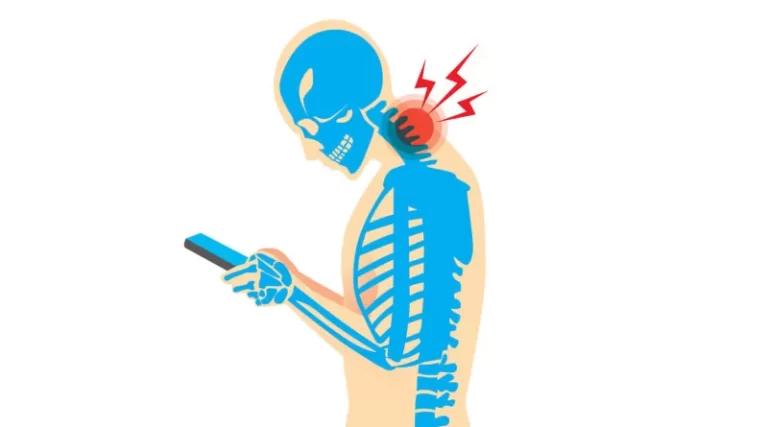Myotonic Dystrophy: Cause, Symptoms, Treatment, Exercise
Myotonic dystrophy (DM) is a part of a group of inherited disorders called muscular dystrophies that affects muscles and many other organs and systems in the body.
In this, the word “myotonic” means “myotonia which is defined as an inability to relax muscles after contraction.
The term “muscular dystrophy” means progressive muscle degeneration with loss, weakness, and shrinkage of the muscle tissue.
Table of Contents
Types of myotonic dystrophy
Myotonic dystrophy (DM) has two major types:
(1) DM1 and (2) DM2 — The reason behind this is genetic defects.
They result in multisystem disorders characterized by skeletal muscle weakness and myotonia which means difficulty relaxing muscles after use, cardiac abnormalities, cataracts (eye problem), and other abnormalities.
DM1 subtypes include:
Congenital-onset DM1
It may present before birth with slow fetal movement and it is characterized by joint contractures, severe muscle weakness, profound hypotonia, poor feeding, cognitive impairment, respiratory failure, and other developmental abnormalities of the child
Childhood- or juvenile-onset DM1
It begins during childhood means after birth but before adolescence and is characterized by cognitive and behavioral symptoms, muscle weakness, myotonia, mood disorders, anxiety, attentional deficits, and other symptoms. Some patients may have arrhythmias while playing sports, and cardiomyopathy and heart failure can be diagnosed
Adult-onset (classic) DM1
It begins in adolescence or early adulthood and it is characterized by slowly progressive body weakness, myotonia, cardiac abnormalities, respiratory weakness, cataracts, and, sometimes mild to moderate cognitive difficulties
Mild DM1
It usually appears in 20 to 70 years old patients, typically after age 40. This mild form of DM1 is characterized by mild weakness, myotonia, and cataracts
Symptoms
The symptoms of myotonic muscular dystrophy can begin at any age during a period of infancy and the age of 40. People with myotonic dystrophy type 1(DM 1) typically have involvement of the face, legs, neck, and, hands. However, people with myotonic dystrophy type 2(DM 2) typically feel the involvement of the neck, shoulders, elbows, and hips. The severity of symptoms can vary largely among affected individuals.
Skeletal Muscle Weakness
Skeletal muscles are the voluntary muscles that are attached to your bones. They move your arms, legs, head, neck, and foot in the body. They can be mild to moderately weak with less muscle power with type 1 or DM 1 and type 2 or DM 2, but these muscles can not become completely paralyzed or flaccid.
For example, if a patient tried to squeeze their hand close, but the action takes longer than they want it to.
Muscle Atrophy
Atrophy means loss of muscle and it causes further weakness and damage, as well as produces an appearance of thinning of muscles.
Digestive Problems
Weak gastrointestinal muscles and prolonged contraction can cause pain in the stomach, gallbladder problems, and constipation.
Myotonia
It means the increased muscle tone of myotonic muscular dystrophy, and it manifests as a prolonged contraction and slowed relaxation of the muscles. The meaning of this is that once a muscle moves for action, it takes a few seconds longer time than usual to return to its relaxation.
Myotonia can affect skeletal muscles along with the muscles of the internal organs of the body. These can be very minor symptoms when it affects the skeletal muscles, but it can cause major symptoms in the internal organs of the body. For example, it can cause the heart to function beat slowly or slow digestive function.
Heart Problems
The weakness of heart muscles of this condition can cause decreased power and strength of each heart contraction, which may be called fatigue. Myotonic dystrophy can also impact the electrical system of the heart, potentially producing bradycardia means slow heart rate which can cause fatigue, weakness, lightheadedness, or syncope, or ventricular tachycardia, which can cause sudden death of the patient. Heart problems are more common with type 1 or DM 1 than with type 2 or DM 2.
Cataracts
A progressive or gradually worsening eye problem characterized by cloudy vision, cataracts which are very common with aging tend to occur more frequently and at a younger age with myotonic muscular dystrophy.
Insulin Resistance
It is a medical condition characterized by high blood glucose, which is commonly associated with both types of myotonic dystrophy.
Early Male Pattern Baldness
Men are more likely than women to have early baldness, but the female who has type 1 or DM 1 and type 2 or DM 2 can have hair loss also.
Characteristic Facial Appearance
This characteristic appearance includes ptosis means drooping eyelids, a narrow face, a sagging jaw, which are caused by the weakening of the facial muscles.
Diagnosis
Myotonic dystrophy is mainly diagnosed by doing a physical exam of individuals. A physical exam can recognize the typical pattern of wasting of muscle and weakness and the presence of myotonia in the patient. A person with myotonic dystrophy may have a characteristic facial appearance of wasting and weakness of the jaw and neck and facial muscles. The Male has a frontal balding appearance.
There are some laboratory tests that are used to clarify the clinical diagnosis of myotonic dystrophy.
(1) electromyography (EMG), which includes inserting a small needle into the muscle. The electrical activity of the muscle is diagnosed and usually shows characteristic patterns of muscle electrical discharge.
The important test for myotonic dystrophy is a genetic test. For this test, a blood sample is taken to identify the problematic gene mutation within the chromosomes which are contained in the white blood cells (WBCs). Myotonic dystrophy type 1 (DM1) is mainly caused by a mutation in the DMPK gene. Type 2 myotonic dystrophy is happened by a mutation in the CNBP gene of the body.
Treatment
There is currently no cure or specific management protocol for myotonic dystrophy. Routine physical activity is done to help maintain muscle strength, power, and endurance and to control musculoskeletal pain in the body.
Patients with muscular dystrophy should be monitored throughout their lives for activity. Their care team includes a neurologist with expertise in neuromuscular disorders, rehabilitation specialist, physical medicine specialist, and physical and occupational therapists.
Some people might also require a lung specialist called a pulmonologist, a cardiologist, a sleep specialist, an endocrinologist, an orthopedic surgeon, and other specialists.
- Medical Interventions
Anti-arrhythmics
Anti-epileptics
Anti-myotonic drugs
Non-steroidal anti-inflammatory drugs (NSAIDs)
Steroids - Surgical Interventions
Defibrillator or a cardiac pacemaker
Contracture release
Shoulder surgery
Spinal correction - Other Interventions
Supportive physiotherapy
Supportive bracing
Supportive counseling
Physiotherapy will aim to:
- Maximize physical potential
- Maximize respiratory function
- Prevent soft tissue shortening
- Maximize motor development and milestones
- Maintain muscle strength in order to delay muscle wastage in the large muscle groups
- Improve postural stability
- Improve independence
- Improve the quality of life
- prevent scoliosis and contractures.
Physiotherapy for babies with myotonic dystrophy
- Physiotherapy treatment for babies with conditions will immense shortly after birth and will be centered around:
- Helping jaw and lip weakness
- Improving breathing to maximize lung function
- Encouraging movement of babies
- Facilitating postural stability like learning how to position your child during lying and sitting to encourage appropriate postural responses of babies
- If a child has a club foot, gentle passive stretching will help in realigning the foot and ankle and mainly in preventing deformities, which may be used with plaster casting.
Physiotherapy for young children with myotonic dystrophy
Physiotherapy treatment will help young children reach their developmental milestones such as physical achievement with sitting without support, head movement, crawling, and walking.
Physiotherapy treatment will target to achieve these all milestones and it may include:
- Passive as well as active stretching to prevent soft tissue shortening
- Exercises in a supported and stimulating atmosphere to improve muscle strength, power, and flexibility. Using toys and mirror images can help keep your child motivated as a biofeedback
- Activities to improve balance and coordination
- Exercises to improve posture in all positions such as lying, sitting, and standing
- Advice about supportive seating to prevent postural deformity, which allows more effective upper limb functions like gripping and writing.
- orthotics to improve standing and walking while development
Physiotherapy for adults with myotonic dystrophy
- Strengthening exercises mainly for the lower limb and targeted dorsiflexor to improve mobility and gait pattern.
- Exercises to improve balance
- Breathing exercise to reduce the risk of chest infections
- Hydrotherapy stretch tight muscles and strengthen muscles
- The advice of orthoses is to reduce the effect of foot drop and improve stability while walking.
- Advice on mobility aids such as walking sticks and wheelchairs







